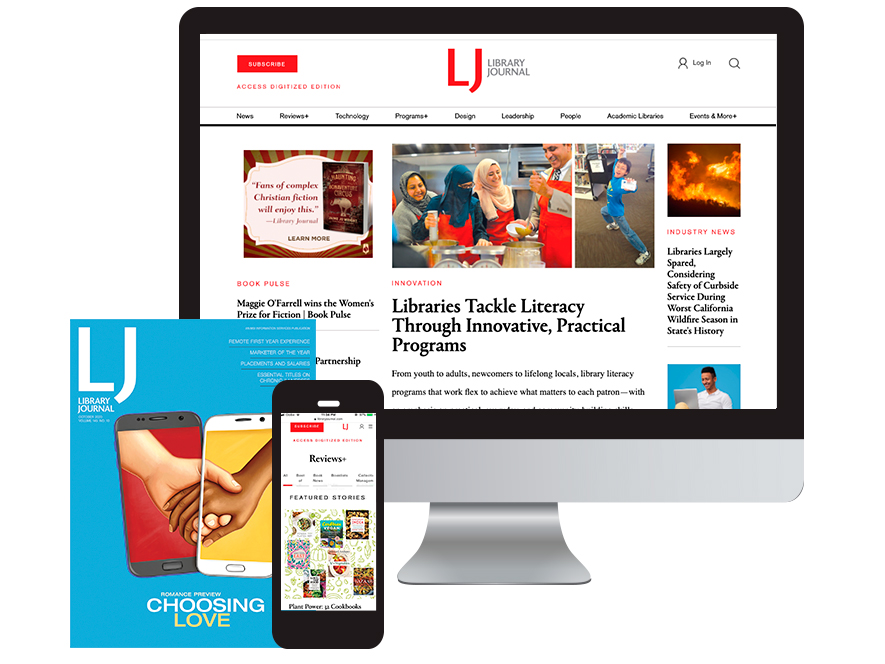What Makes Up a Master’s | Placements & Salaries 2018
 The LIS discipline recognizes various names for equivalent master’s degrees. Sixty percent of graduates reported that their degree used the designation Master in Library and Information Science (or Studies). Master in Library Science (or Studies) was used for 18% of graduates, followed by Master in Information Science (14%). Only 5% said their degree had a different name.
The LIS discipline recognizes various names for equivalent master’s degrees. Sixty percent of graduates reported that their degree used the designation Master in Library and Information Science (or Studies). Master in Library Science (or Studies) was used for 18% of graduates, followed by Master in Information Science (14%). Only 5% said their degree had a different name.
LIS master’s programs are made available to students through different delivery options. Almost half of graduates completed their degree via fully online instruction (49%). Thirty-six percent learned through a combination of on-site and online courses, while only 15% completed their degree using solely traditional on-site instruction.
|
Foundations and Futures | Placements & Salaries 2018 Salaries Rise Slightly | Placements & Salaries 2018 |
Graduates indicated which experiences were the most helpful or important for obtaining their first professional position. Many (56%) cited practical hands-on learning received through a practicum, internship, or fieldwork. More than half also chose technological skills such as database searching, HTML coding, or other Internet-oriented skills (53%). Specialized subject knowledge, such as cataloging or reference instruction, was also important (45%). Networking with professionals in their field of interest (42%) was seen as valuable by many. About a third of the graduates felt that specializing in a particular type of information agency (like an academic or medical library) was helpful. Obtaining additional certifications along with the master’s degree was a contributing factor for only 12%. All results on this measure are consistent with last year’s survey.
Reflecting graduates’ view of the importance of practical work experience for obtaining professional employment, 62% engaged in at least one internship/practicum and several did two or even more. The overall average was one internship. This level of participation is especially impressive, considering that some graduates were already working in professional environments at lower-level jobs. Thirty-eight percent of the 2017 graduates did not do an internship, which is noticeably lower than last year.
Graduates also shared what if any post-coursework culminating experience was required by their schools. Almost half said they created an ePortfolio (48%), while one-third did an internship in order to graduate. Others were required to complete a formal project (20%). Relatively few took a comprehensive exam (12%). This year, only 6% wrote a thesis to graduate, which was substantially lower than last year (22%). Some grads noted they had participated in other kinds of capstone experiences, including writing a research paper or proposal, taking research methods courses, student teaching and/or observation, and completing practicums.
Some 56% indicated that, upon graduation, they stayed with their employer or in the position they held prior to or while attending the LIS master’s program. Of graduates who stayed with the employer, 31% indicated that they received a raise after obtaining the degree. Others enjoyed a change in status, being promoted (22%) or moving from support to professional staff (21%). Gaining tenure eligibility (2%) affected only a few. Other circumstances graduates referred to were the ability to apply for better positions, or preparation for later transfers to other organizations. Forty-four percent reported no change in status after getting the degree.
2017 TOTAL GRADUATES AND PLACEMENTS BY SCHOOL*
SCHOOLS |
GRADUATES | EMPLOYED FULL-TIME |
RESPONSE | |
| ALL** | ALL** | NO. REC'D | RATE | |
| Alabama | 69 | 16 | 25 | 36.20% |
| Albany | 35 | 7 | 8 | 22.90% |
| Arizona | 44 | 8 | 12 | 27.30% |
| Buffalo | 63 | 10 | 12 | 19.00% |
| Catholic* | 33 | 4 | 6 | 18.20% |
| Clarion | 120 | 14 | 23 | 19.20% |
| East Carolina | 71 | 5 | 7 | 9.90% |
| Florida State | 88 | 6 | 9 | 10.20% |
| Hawaii Manoa | 28 | 15 | 22 | 78.60% |
| Illinois Urbana-Champaign* | 242 | 28 | 41 | 16.90% |
| Indiana-Bloomington | 87 | 26 | 30 | 34.50% |
| Indiana-Purdue | 82 | 6 | 8 | 9.80% |
| Iowa | 37 | 16 | 21 | 56.80% |
| Kentucky | 85 | 23 | 31 | 36.50% |
| Long Island | 104 | 8 | 11 | 10.60% |
| Louisiana State | 47 | 23 | 26 | 55.30% |
| Maryland | 76 | 29 | 38 | 50.00% |
| Michigan* | 126 | 93 | 109 | 86.50% |
| Missouri | 43 | 13 | 15 | 34.90% |
| NC Chapel Hill* | 66 | – | 65 | 98.50% |
| NC Greensboro | 178 | 18 | 27 | 15.20% |
| North Texas | 364 | 36 | 44 | 12.10% |
| Oklahoma | 53 | 16 | 18 | 34.00% |
| Pratt | 63 | 14 | 18 | 28.60% |
| Queens | 65 | 28 | 33 | 50.80% |
| Rutgers | 92 | 39 | 49 | 53.30% |
| San José | 505 | 85 | 117 | 23.20% |
| Simmons | 269 | 95 | 113 | 42.00% |
| South Carolina | 116 | 30 | 32 | 27.60% |
| South Florida | 81 | 12 | 16 | 19.80% |
| Southern Mississippi | 40 | 20 | 22 | 55.00% |
| St. Catherine | 56 | 23 | 30 | 53.60% |
| St. John’s | 28 | 12 | 16 | 57.10% |
| Syracuse | 68 | 9 | 13 | 19.10% |
| Tennessee | 55 | 18 | 18 | 32.70% |
| Texas-Austin* | 92 | 43 | 51 | 55.40% |
| Texas Woman’s | 148 | 27 | 32 | 21.60% |
| Valdosta State | 68 | 26 | 31 | 45.60% |
| Washington | 127 | 28 | 38 | 29.90% |
| Wayne State | 153 | 30 | 34 | 22.20% |
| Wisconsin-Madison* | 93 | 41 | 51 | 54.80% |
| Wisconsin-Milwaukee | 129 | 32 | 45 | 34.90% |
| TOTAL/AVERAGE | 4,389 | 1,032 | 1,367 | 31.10% |
| Tables do not always add up, individually or collectively, owing to omitted data from schools and/or individuals. | ||||
| *Some schools conducted their own survey and provided raw data. Comparison with other tables may show different numbers of placements. | ||||
| **Includes nonbinary, unsure, and declined to answer gender. | ||||
LIS SCHOOLS AND JOB PLACEMENTS
LIS schools connect students with vital information about available openings. A Listserv was the most commonly used channel for disseminating position announcements (87%). Many schools also used social media accounts such as Facebook and Twitter to circulate job information (58%). Some also spread the word through student organizations or activities (50%), or by posting paper announcements in communal areas (45%). Only about a third have formal job placement centers or services (32%). And only six schools reported that they have a formal mentoring program for their graduates, offering formal links among alumni, students, and employers; mentoring from library staff in corresponding areas of interest; individual career counseling; faculty advisors serving as mentors; and courses about job searching.
Using some combination of these communication channels, 67% of LIS schools reported that they shared between 100 and 499 job announcements with their students in the last year. On average, each school made 534 announcements available to students. Some electronic channels such as social media and Listservs may also allow job announcements to reach alumni and other stakeholders. The schools reported that 80% of the available positions in libraries in 2017 were full-time. The schools were asked about the relative proportions of announcements for traditional vs. nontraditional placements in 2017; among the schools that addressed this, 39% said that the proportion was unchanged from 2016.
Suzie Allard (sallard@utk.edu) is Professor of Information Sciences and Associate Dean of Research, University of Tennessee College of Communication & Information, Knoxville. She is Principal Investigator (PI) or co-PI on grants funded by IMLS, NSF, and other foundations. She is a member of the DataONE Leadership Team and the Networked Digital Library of Theses and Dissertations Board of Directors and winner of the 2013 LJ Teaching Award.
RELATED
ALREADY A SUBSCRIBER? LOG IN
We are currently offering this content for free. Sign up now to activate your personal profile, where you can save articles for future viewing









Add Comment :-
Comment Policy:
Comment should not be empty !!!